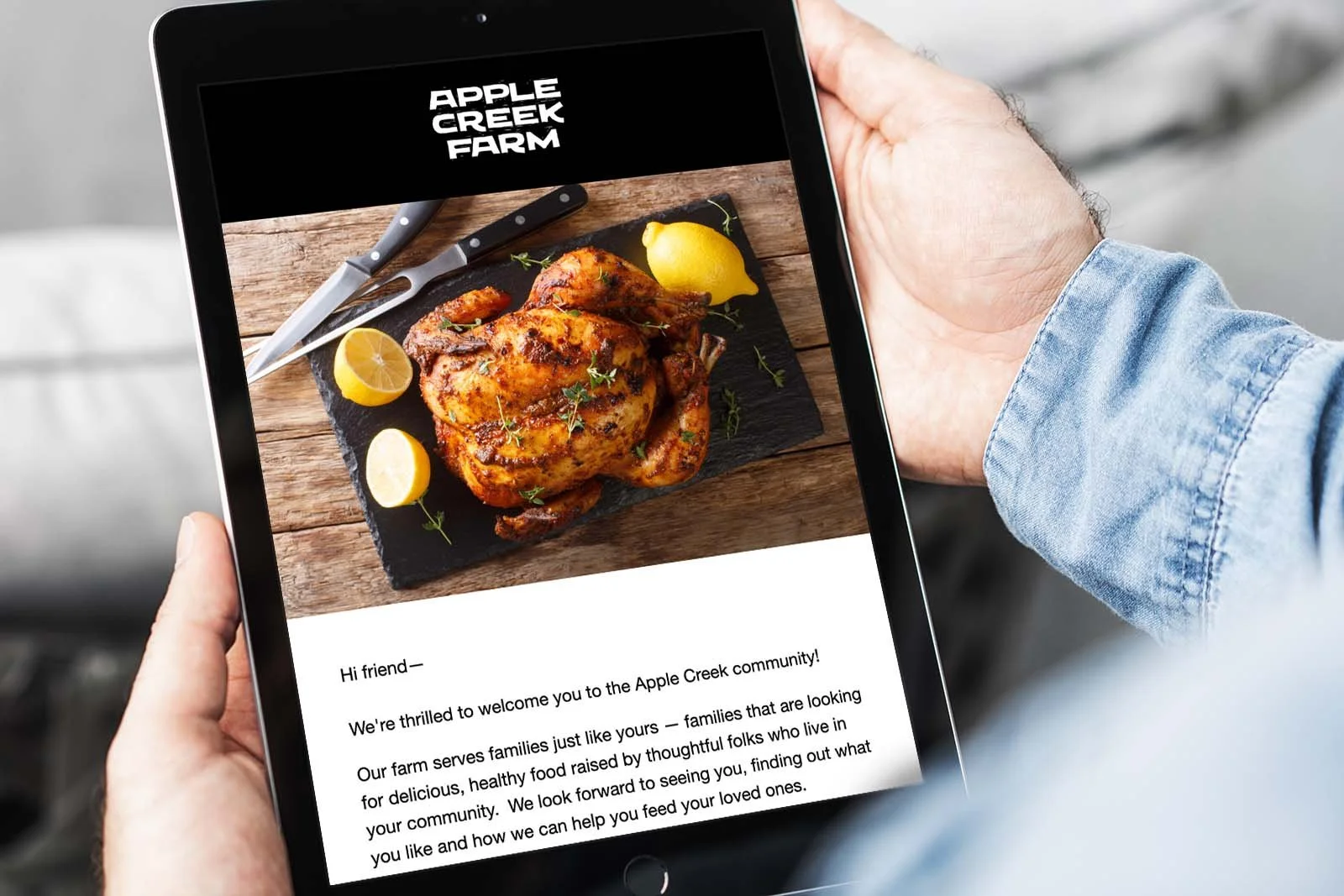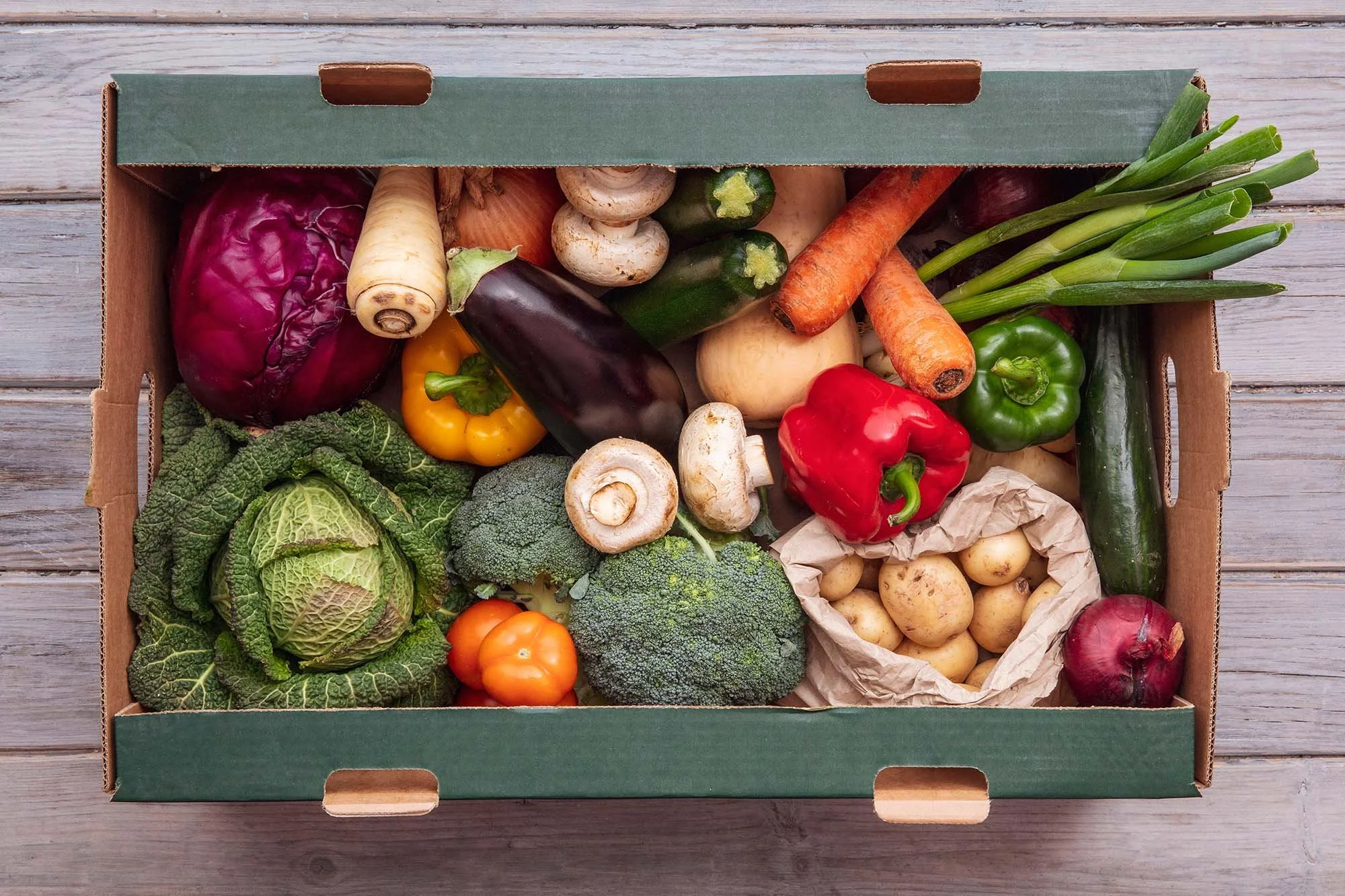10 ways to land your farm’s marketing emails in more inboxes
Your customers are excited about supporting local food. They stop by your farm store or website and eagerly add their name to your email list to be the first to know about next season’s offerings. Next season rolls around. Your email blast goes out… and… crickets? The clicks on your email are disappointing. There are few purchases to speak of. But why?
Your farm’s emails are landing in spam!
To ensure your farm's emails are seen and engaged with by your target audience, you must focus on increasing your deliverability rate. Deliverability refers to the ability of an email to successfully reach the recipient's inbox without being blocked by spam filters.
A scattershot approach to email marketing can harm your sender reputation, increase unsubscribes, and cost you customers. Email marketing done right, on the other hand, yields one of the highest ROIs of all marketing channels. In this post, we’ll explore 10 effective strategies that will help you avoid email marketing pitfalls, land in more inboxes, and ultimately drive more sales and growth for your farm business.
1. Build a high-quality, segmented email list
Building a high-quality, segmented email marketing list is key to keeping your customers engaged around what's happening on your farm. To get started, you'll want to identify your target audience and create compelling opt-in forms to collect email addresses. Who’s hungry for farm-fresh food and what interests them most? Offer something of value in exchange for their contact information, such as a discount code, exclusive access to seasonal produce, or your favorite farm-fresh recipes.
It's also important to segment your email list based on factors like location or purchase history, so you can tailor your messages to the specific interests and needs of your audience. By sending targeted emails that provide valuable information and updates, you'll strengthen your relationship with your farm’s subscribers and keep them coming back for more.
NEVER buy email lists or send emails to folks who haven’t consented. Some email providers will use spam traps to catch email senders that don’t follow the rules. Landing in a spam trap can be devastating to your sender reputation, but shouldn’t be an issue for most farms that follow best practices. Just something to be aware of!
2. Clean up your list and verify email address
Throw on your muck boots and grab a shovel! Once your farm’s email list starts getting bigger, you’ll want to routinely check up on it and take out the garbage. Email list cleaning, also known as scrubbing, is the process of removing inactive, invalid, or incorrect email addresses from your list. Over time, email lists can become cluttered with outdated or invalid emails, which can negatively impact deliverability and engagement rates.
In most circumstances, Grapevine recommends a double opt-in process for new subscribers. With double opt-in, subscribers must first submit their email address via an opt-in form, and then confirm their subscription by clicking on a verification link sent to their inbox. This two-step process reduces the likelihood of fake or mistyped email addresses, and also helps prevent people from signing up others without their consent.
Double opt-in not only ensures that your email list is filled with engaged subscribers who are interested in your content, but it also protects your sender reputation. By ensuring that your emails are only sent to those who have explicitly consented to receive them, you are less likely to be marked as spam or get dinged on your sender reputation.
3. Use a reputable email service provider
Just as not all email senders are to be trusted, there are some email sending platforms that are less reputable than others. A provider with a good reputation will have implemented measures to ensure the highest possible deliverability rates, including tools to prevent spam and monitor email performance. They will also provide high-quality customer support and resources to help you optimize your email campaigns. Moreover, a reputable email service provider will have a strong focus on data security, ensuring that your data and your customers are protected from unauthorized access or breaches. They will also comply with important data privacy regulations such as CAN-SPAM and the California Consumer Privacy Act (CCPA).
Do you remember being a kid in class or on a sports team and that one kid misbehaving resulted in the whole group being punished? Well, that happens regularly in email marketing. You might be checking all the blocks, doing everything right, and pouring hours into crafting cream of the crop content only to still land in spam! If this is happening, you’ll want to see if you’re sending from a shared sending domain through your email service provider. You might not know it, but other businesses could be breaking the rules, bombarding their customers with obnoxious and unwanted emails, and you’re getting penalized because you’re using the very same infrastructure they are. The solution? Send emails from your own dedicated sending domain. Learn more about dedicated sending domains from our friends at Klaviyo.
4. Personalize your emails
The best way to make your farm’s email stand out to your customers is by personalizing them. Personalization can take many forms, such as including the recipient's name in the subject line or email body or tailoring the content to their interests or past behavior. The more personalized an email is, the more likely it is to catch the recipient's attention and encourage them to open it. According to a study by Experian, personalized emails had a 29% higher open rate than non-personalized ones. Another study by Campaign Monitor showed that emails with personalized subject lines had a 26% higher open rate than those without personalization. A little thoughtful personalization goes a long way!
5. Keep your emails relevant and engaging
Delivering valuable and useful content to your farm's email subscribers is a must for keeping them interested and engaged. To accomplish this, it's important to understand your subscribers' needs and interests, and tailor your content accordingly. You can do this by segmenting your email list and creating content that is relevant to each group. For example, you could send seasonal updates on crops, tips on how to prepare fresh produce, or share stories about the people and animals on your farm. It's also important to keep your content concise, easy to read, and visually appealing. Including images or videos can make your content more engaging and help to convey information more effectively. By delivering valuable and useful content to your farm's email subscribers, you can build a stronger relationship with them and increase their loyalty to your brand. Additionally, providing useful content can help to establish your farm as an expert in your industry and create a positive reputation that can attract new customers.
6. Use a clear and recognizable sender name and email address
Consistency is key. Using a consistent sender name and email address that is recognizable to your subscribers is an important aspect of building credibility for your farm’s brand. When your subscribers receive an email from a familiar and consistent sender, they are more likely to open and engage with it. Using a recognizable sender name and email address helps to build trust and credibility with your subscribers, as they know who the email is coming from and are less likely to perceive it as spam. Additionally, consistency in sender information can help to improve email deliverability by reducing the chances of your emails getting caught in spam filters. By using a consistent sender name and email address, you can create a stronger connection with your subscribers and increase the effectiveness of your email marketing campaigns.
7. Avoid spam trigger words
Avoiding spam trigger words in email marketing is crucial to ensure that your farm’s emails land in your subscribers' inboxes instead of their spam folders. Spam trigger words are words or phrases that are commonly associated with spam or unwanted emails, and using them in your subject lines or email content can flag your emails as spam. To avoid triggering spam filters, it's important to use language that is clear and concise, and avoid using words or phrases that are often associated with scams or spam. Common examples of spam trigger words include “act now,” “limited time offer,” “free,” and “amazing.” Using these words can not only harm your deliverability, but also damage your brand's reputation.
To stay on the safe side, use natural language that is relevant and personalized to your audience. A good way to ensure that your email is not spammy is to provide value to your subscribers and make sure your email content is relevant to their interests. Additionally, it's important to avoid using excessive punctuation, capital letters, and unnecessary symbols in your subject lines and email content. Finally, proofread your email for spelling and grammar to maintain a strong reputation. Typos and hard-to-read sentences are a bad look for your farm brand.
8. Use a clear and concise subject line
The subject lines of your farm’s marketing emails are one of the most important factors that can determine whether your emails are opened or ignored. To increase the chances of your emails being opened, it's important to keep your subject lines short and to the point. This means avoiding long, wordy subject lines that can confuse or overwhelm your customers.
In general, it's best to keep your subject lines under 50 characters, as this is the maximum number of characters that can be displayed in most email clients. This also helps to ensure that your subject line is easily scannable and can be quickly understood. Additionally, including numbers or action-oriented language in your subject line can make it more enticing and increase the chances of your email being opened.
Using emojis can help your farm’s email stand out in a crowded inbox and convey emotion or tone, which can increase the chances of your email being opened. However, it's important to use them appropriately and not overdo it, as too many emojis can come across as unprofessional and make your email appear spammy. We recommend no more than one emoji per subject line. If you do decide to use emojis, make sure to test them to ensure that they don't negatively impact your email deliverability or open rates.
🧺👩🌾🐖🥕🌳
9. Test your emails
Testing your emails before sending is a vital step to ensure they land successfully in your customers' inboxes. One of the main factors to consider when testing your emails is how they appear on different devices and in different inboxes. With so many different email clients and devices available, it's important to make sure your emails are optimized for maximum compatibility. One way to test your emails is to use an email testing tool that simulates how your email will appear in different inboxes and on different devices. This allows you to identify any formatting or display issues that may affect how your message is perceived by your customers. You can also send test emails to a variety of email accounts to see how they appear in different inboxes and email clients. If your emails are formatted poorly or hard to read, this will tarnish your farm’s brand image and reduce your customers’ engagement.
10. Monitor your email metrics
Keeping track of your email open and click-through rates is essential to optimizing your farm’s email marketing strategy and maximizing deliverability. By monitoring these metrics, you can gain insights into the effectiveness of your campaigns and make data-driven decisions to improve them. Email open rates indicate the percentage of recipients who opened your email, while click-through rates measure the number of people who clicked on a link or call-to-action in your email. These metrics can provide valuable information about your audience's engagement and help you understand what content resonates with them. It's essential to analyze these metrics regularly and identify patterns or trends. For instance, if you notice a low open rate, it might be time to reevaluate your subject lines or sender name. Alternatively, if your click-through rate is low, you may need to reconsider your content or the placement of your links.
Get Started Today
There are many strategies you can implement to increase your farm's email deliverability and ultimately drive more sales and growth for your business. Building a high-quality, segmented email list, verifying email addresses, and using a reputable email service provider are just a few of the ways you can improve your email marketing campaigns. By personalizing your emails, keeping your content relevant and engaging, and avoiding spam trigger words, you can increase the chances of your audience opening and engaging with your emails. Testing your emails and keeping an eye on metrics are also important steps to ensuring the success of your email marketing campaigns. By following these best practices, you can avoid email pitfalls and get the most bang for your hard-earned marketing bucks.
Want in-depth help with segmentation, automation, or optimizing your farm’s marketing emails for delivery? Explore our tailored email marketing packages for farms.




















